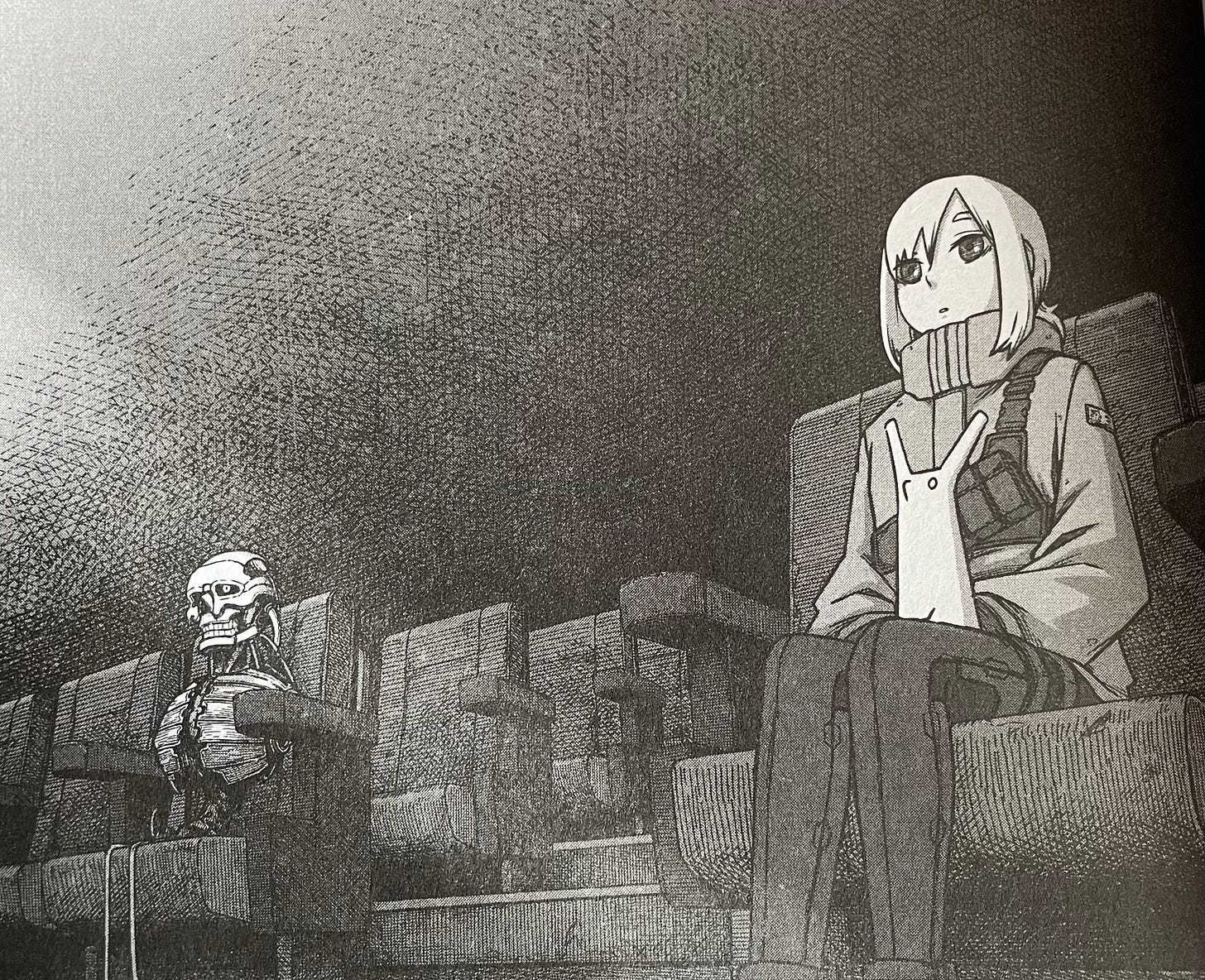One To Watch: The Color of the End
The apocalypse can be pretty cozy.
I’ve always been drawn to dystopian settings, but I’m only scratching the surface of dystopian manga. I still think Last of Us is the best show of modern times, and that won’t change any time soon. I love every thing from Mad Max to Shaun of the Dead. Yet every time I pick up a dystopian manga (Gachiakuta, Tsugumi Project, After God, Zom100), I am reminded that this is another of my favorite genres.
Enter The Color of the End. The story of a world wiped out by a sickness that rapidly took the lives of billions, leaving corpses with strange square crystals growing out of them. It’s the story of one young girl, Shun, surveying the wasteland for survivors.
I saw this announced on Yen’s Instagram and was thoroughly enamored with the art style. It has a similar artistic sensibility to Gachiakuta, where this complex, post-apocalyptic setting is offset by character designs that lean into simplicity, thick lines and stylistic choices. It’s just a really attractive combination, accentuated by perhaps the cutest and most nondescript mascot character I’ve ever seen. His name is Coo. I love him. Her. It. However Coo identifies themself, I love them.
Also, not for nothing, but given how so many manga lean into massive character casts, there’s something calming and welcoming about entering a story with one whole main character and the aforementioned nondescript and nonverbal mascot character.
In committing to this isolationist aura, it makes every interaction that much more meaningful. The first one comes in the form of a robot with a human consciousness transferred into it, permanently sitting in a movie theater watching films. This simple and immensely sobering interaction is everything it needed to be to really set the tone for what’s to come.
It also inevitably establishes this craving in the reader for more interactions. For our hero to find more people, robots, talking animals, anything with a voice.
And that pays off big time in the second interaction, where our protagonist meets an android housekeeper who can’t wait for her to meet “her master.” The anticipation ratchets up along with the protagonist because we want there to be other people alive by this point. Someone to maybe “add to the heroes party,” so to say. And when the master turns out to be long dead? You will be disappointed. But in a good way. The way that makes you want more from the next interaction. I won’t spoil anything else from there.
This doesn’t strike me as a series that’s going to shy away from those fun dystopian tropes like high-octane combat (Shun has weaponry, after all), but if it does go full-on quiet dystopian, dare I even say cozy dystopian (costopian?), it has the storytelling chops to pull it off. It’s a very simple premise, with a very likable protagonist and the artistic vision to leave readers engrossed in these beautifully eerie and abandoned cityscapes.
Tune in next week for the One Great Panel from The Color of the End.


